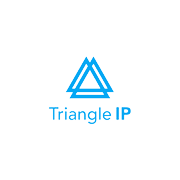Boston Scientific Neuromodulation Corporation Patent Portfolio Statistics
Profile Summary
This article summarizes the perfomance of the assignee in the recent years. The overall statistics for this portfolio help to analyze the areas where the assignee is performing well. The filing trend, perfomance across the tech centers and the perfomance of the recent applications has been mentioned below. All the stats are calculated based on the perfomance in USPTO.
How does the overall patent portfolio of Boston Scientific Neuromodulation Corporation look like?
| Assignee | Art Units | |
| Total Applications: | 1,798 | 1,861,003 |
| Granted Patents: | 1,233 | 1,112,087 |
| Grant Index | 81.87% ↑ | 75.71% |
| Abandoned/Rejected Applications: | 273 (18.13%) | 356,764 (24.29%) |
| In-Process Applications: | 291 | 392,152 |
| Average Grant Time: | 3.3 Years ↑ | 2.78 Years |
| Average Office Actions: | 2.13 ↑ | 1.6 |
Which Technology Area Boston Scientific Neuromodulation Corporation is filing most patents in? (Last 10 years)
| Art Unit | Definition | Total Applications |
| 3762 | Refrigeration, Vaporization, Ventilation, and Combustion | 549 |
| 3766 | Medical Instruments, Diagnostic Equipment, and Treatment Devices | 400 |
| 3792 | Medical Instruments, Diagnostic Equipment, and Treatment Devices | 345 |
| 3737 | Medical Instruments, Diagnostic Equipment, and Treatment Devices | 22 |
| 3729 | Manufacturing Devices & Processes, Machine Tools & Hand Tools | 18 |
How many patents are Boston Scientific Neuromodulation Corporation filing every year?
| Year | Total Applications | Predicted |
| 2022 | 0* | 781 |
| 2021 | 14* | 699 |
| 2020 | 38 | 598 |
| 2019 | 49 | 49 |
| 2018 | 73 | – |
| 2017 | 92 | – |
| 2016 | 64 | – |
| 2015 | 64 | – |
| 2014 | 108 | – |
| 2013 | 132 | – |
*The drop in the number of applications filed in last two years compared to previous years is because applications can take up to 18 months to get published
Recently filed patent applications of Boston Scientific Neuromodulation Corporation in USPTO?
Application number: 17/596,340
Abstract:
Publication date: –
Applicant: Boston Scientific Neuromodulation Corporation
Inventors: Fernandez Huertas Ismael
Publication number: US20220088392A1
Application number: 17/457,366
Abstract:
Publication date: 2022-03-24
Applicant: Boston Scientific Neuromodulation Corporation
Inventors: Griffith J Paul
Publication number: None
Application number: 17/616,086
Abstract:
–
Publication date: –
Applicant: Boston Scientific Neuromodulation Corporation
Inventors: Esteller Rosana
How are Boston Scientific Neuromodulation Corporation’s applications performing in USPTO?
| Application Number | Title | Status | Art Unit | Examiner |
| 17/596,340 | Spinal Cord Stimulation System Determining Optimal Sub-Perception Therapy By Using Neural Dose | Application Dispatched from Preexam, Not Yet Docketed | 3792 | – |
| 17/457,366 | Architectures For An Implantable Stimulator Device Having A Plurality Of Electrode Driver Integrated Circuits With Shorted Electrode Outputs | Docketed New Case – Ready for Examination | OPAP | Central, Docket |
| 17/616,086 | Methods And Systems For Storage, Retrieval, And Visualization Of Signals And Signal Features | Sent to Classification contractor | – | – |
| 17/536,351 | Adjustment Of Analgesic Stimulation Parameters Based On Trust Dynamic Measurements | Docketed New Case – Ready for Examination | OPAP | Central, Docket |
| 17/533,748 | Stimulation Progamming Aid Using A Sensory Projection | Docketed New Case – Ready for Examination | OPAP | Central, Docket |

